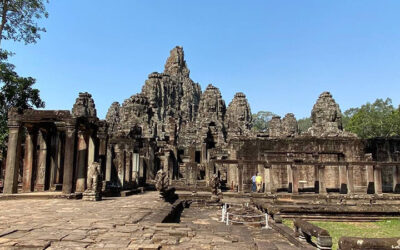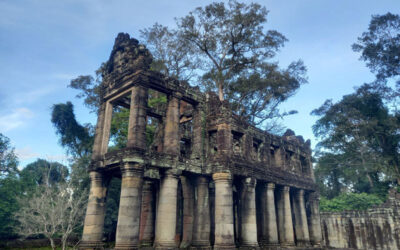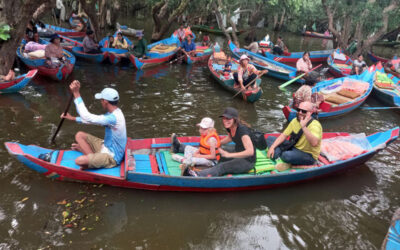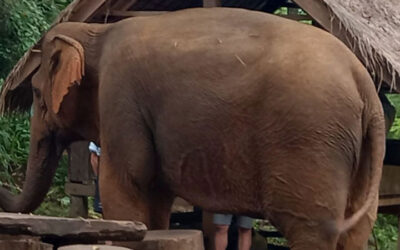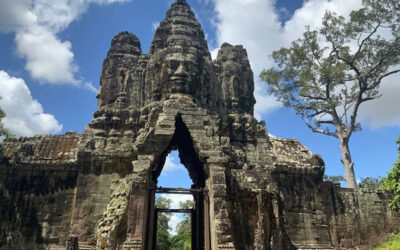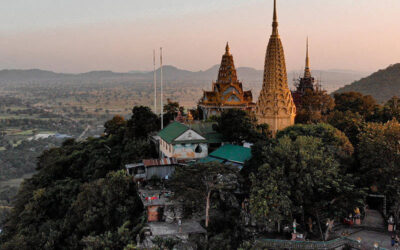Welcome to Angkor Private Taxi, Cambodia Kingdom of Wonder.
Angkor Wat is an enormous Buddhist temple complex located in northern Cambodia. It was originally built in the first half of the 12th century as a Hindu temple. Spread across more than 400 acres, Angkor Wat is said to be the largest religious monument in the world. Its name, which translates to “temple city” in the Khmer language of the region, references the fact it was built by Emperor Suryavarman II, who ruled the region from 1113 to 1150, as the state temple and political center of his empire.
Originally dedicated to the Hindu god Vishnu, Angkor Wat became a Buddhist temple by the end of the 12th century.
Although it is no longer an active temple, it serves as an important tourist attraction in Cambodia, despite the fact it sustained significant damage during the autocratic rule of the Khmer Rouge regime in the 1970s and in earlier regional conflicts.
Where Is Angkor Wat?
Angkor Wat is located roughly five miles north of the modern Cambodian city of Siem Reap, which has a population of more than 200,000 people.
However, when it was built, it served as the capital of the Khmer Empire, which ruled the region at the time. The word “Angkor” means “capital city” in the Khmer language, while the word “Wat” means “temple.”
Initially, Angkor Wat was designed as a Hindu temple, as that was the religion of the region’s ruler at the time, Suryavarman II. However, by the end of the 12th century, it was considered a Buddhist site.
Unfortunately, by then, Angkor Wat had been sacked by a rival tribe to the Khmer, who in turn, at the direction of the new emperor, Jayavarman VII, moved their capital to Angkor Thom and their state temple to Bayon, both of which are a few miles to the north of the historic site.
As Angkor Wat’s significance within the Buddhist religion of the region increased, so too did the legend surrounding the site. Many Buddhists believe the temple’s construction was ordered by the god Indra, and that the work was accomplished in one night.
However, scholars now know it took several decades to build Angkor Wat, from the design phase to completion.
Angkor Wat’s Design
Although Angkor Wat was no longer a site of political, cultural, or commercial significance by the 13th century, it remained an important monument for the Buddhist religion into the 1800s.
Indeed, unlike many historical sites, Angkor Wat was never truly abandoned. Rather, it fell gradually into disuse and disrepair.
Nonetheless, it remained an architectural marvel unlike anything else. It was “rediscovered” in the 1840s by the French explorer Henri Mouhot, who wrote that the site was “grander than anything left to us by Greece or Rome.”
The compliment can likely be attributed to the temple’s design, which is supposed to represent Mount Meru, the home of the gods, according to tenets of both the Hindu and Buddhist faiths. Its five towers are intended to recreate the five peaks of Mount Meru, while the walls and moat below honor the surrounding mountain ranges and the sea.
By the time of the site’s construction, the Khmer had developed and refined their own architectural style, which relied on sandstone. As a result, Angkor Wat was constructed with blocks of sandstone.
A 15-foot high wall, surrounded by a wide moat, protected the city, the temple, and the residents from invasion, and much of that fortification is still standing. A sandstone causeway served as the main access point for the temple.
Inside these walls, Angkor Wat stretches across more than 200 acres. It’s believed that this area included the city, the temple structure and the emperor’s palace, which was just north of the temple.
However, in keeping with tradition at the time, only the city’s outer walls and the temple were made of sandstone, with the rest of the structures built from wood and other, less durable materials. Hence, only portions of the temple and city wall remain.
Even so, the temple is still a majestic structure: At its highest point—the tower above the main shrine—it reaches nearly 70 feet into the air.
The temple walls are decorated with thousands of bas-reliefs representing important deities and figures in the Hindu and Buddhist religions as well as key events in its narrative tradition. There is also a bas-relief depicting Emperor Suryavarman II entering the city, perhaps for the first time following its construction.
Thing To Do
TONLE SAP LAKE
This lake is the biggest lake of Southeast Asia and changes every monsoon and dry season in dimension. You can rent a boat to go along the river and watch the fisherman working. It will cost you about US $20USD for a few hours, and brings you all the way until you reach the Tonle Sap lake.
Kampong Khleang
Is located northern edge of the fresh water lake.It is 55 km from the city. This trip can be combined with Beng Melea,the 12th century temple. The whole community has some five thousand stilted houses built on the shore and by the side of the river. In dry season, we see all houses are about 10 meters above the ground. There are 20,000 peoples living in those houses. They build them so close to each other, which make them look really good by real eyes and never want to miss to take to photos since it is the first time to visit.during the monsoon season, the water rises up sometimes of the year to the floor of their houses. Boat ride during the dry season and rainy season is totally different. To see everything, boat ride will take you to see the villages, schools, market boats, floating houses.
Kampong Phluk
Is one of the lake site attractions which on the other part of Tonle Sap. It is situated 25 km from Siem Reap city. The trip to this place can be combined with Roulos Group: Bakong, Lolei, and Preah Ko. Kampong Phluk means Harbour of the Tusks. The journey to visit Kampong Pluk will be visiting stilted houses, school children, fishermen and some activities of their fishing. Above all, Kampong Pluk has its unique flooded forests where you can not find anywhere else in Cambodia.Also, if somebody wants to donate something to the poor primary school, you can buy something like books, or other school materials from the city to those things to them. nnected by avenues of water from which individuals or boats full to the brim paddle their way between one another. Most people make their living from fishing here, and the scenery is beautiful.
CAMBODIAN CULTURAL VILLAGE
Is located on national 6 to the airport. This place is one tourist attraction. It is set up for those tourists who cannot have a lot of time to understand about the way of living of those tribal people. In there, it has collection of villages such as Wax Museum, Millionaire House, Souvenirs, Cham Village, Chinese Village, Kroeng Village, Cambodian Immigrants to Oversea Village, Khmer Village, Miniatures, Phnorng Village, Surin Village.
LANDMINE MUSEUM
Landmines have devastated the country, maiming and killing thousands. These remnants of past wars still cause destruction today. The Landmine Museum has an in depth museum and dormitory residence for up to 30 amputee children and a school. This is very worthwhile cause to check out and donate to.
APSARA DANCING
Though this can seem like a tourist trap given the number of people offering this to you, the dancers are often talented and the dance is very much a part of modern Khmer culture. It’s and authentic, though touristy, way to see traditional Khmer performance art.
HAPPY RANCH HORSE FARM
This ranch offers countryside trail rides by horseback—you can take rides that last anywhere from an hour to four. Wander in and out of the various villages, rice fields, and Buddhist pagodas during sunrise or sunset. It is an awesome adventure.
CAMBODIAN COOKING CLASS
Learning the art of Cambodian cuisine is a fun and more unique tourist attraction. The class sizes tend to be around 6 people and you will learn 3 entire meals as well as get recipe cards at the end.
TOUR AROUND Angkor Wat
Angkor wat 1 day tour
At 8:30am the tour guide and driver pick up you from the hotel to buy the Angkor temple pass ( 1 day pass $37 per person) and then we continue to visit Angkor wat temple,...
Angkor Wat 3 Days Tour
Day 1 : Angkor Wat Small Circle Tour At 4:30am the driver pick up you from the hotel to buy the Angkor temple pass ( 3 days pass $72 per person) and then we continue to...
Angkor Wat Day Tour
At 8:30am the tour guide and driver pick up you from the hotel to buy the Angkor temple pass ( 1 day pass $37 per person) and then we continue to visit Angkor wat temple,...
One Day Tours Near Phnom Penh
We leave Phnom Penh and drive an hour to see Oudong Mountain, experience beautiful views, ruins from the old capital, and eat local food. Oudong Mountain was the site of the...
Two Days in Phnom Penh
Day 1Pick up from the hotel and go to have breakfast if you did not eat already. This day provides a look at what happened to Cambodia during the Khmer Rouge time from 1975...
Three Days in Kampot and Kep
Day 1: Trip to KampotWe leave from your hotel in Phnom Penh after breakfast to Kampot , driving via road #2 or #3, on the way, we can stop for coffee break. We can go...
Four Days in Kratie and Mondulkiri
Day 1: to KratieWe start a bit early morning around 7 am from Phnom Penh to Kratie. We will stop on the way at Skun Village where they sell spiders, insects, fruit and other...
5Days Kampong Thom & Siem Reap
Day 1: Phnom Penh to Kampong Thom to Siem ReapeWe will get an early start and drive to Skun Village, where we can take a short break and see interesting snacks for sale,...
6Days Battambang & Siem Reap
Day 1: Phnom Penh to BattambangWe will start the day in the morning, leaving Phnom Penh after breakfast (any time between 7:30 and 9 am). We will stop along the way for...


